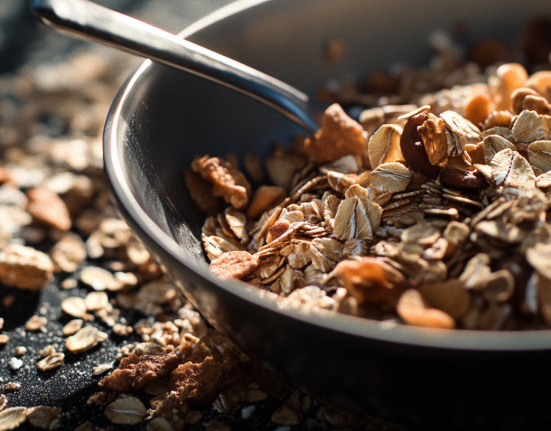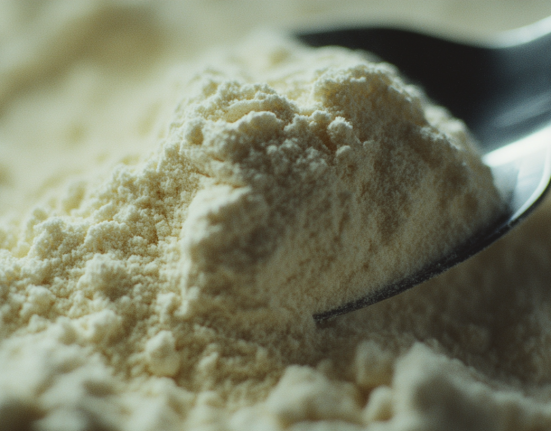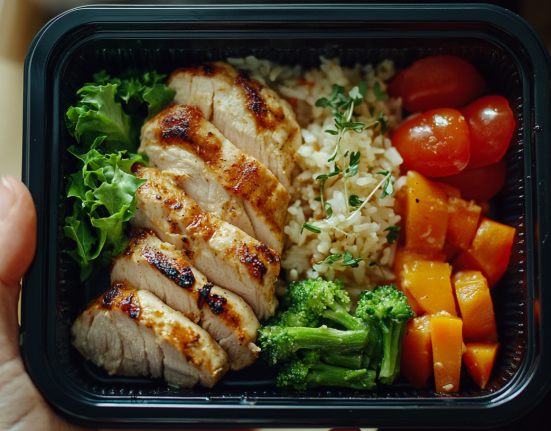Introduction
Embarking on a journey towards a healthier lifestyle often begins with reevaluating our eating habits, particularly the first meal of the day: breakfast. Opting for a high-protein, low-carb breakfast can kickstart your metabolism, maintain muscle mass, and keep you feeling full and energized until lunch. This dietary approach not only supports weight management but also stabilizes blood sugar levels, reducing cravings and improving overall health.
However, the challenge many face is not just in choosing to eat healthily, but in knowing what to eat, how to prepare it, and maintaining variety to keep the diet enjoyable. In this blog post, we’ll explore everything you need to build delicious, nutritious high-protein, low-carb breakfasts—from the essential ingredients and innovative recipes to inspiring ideas that will help you plan and prep these meals with ease.
Whether you’re a seasoned low-carb dieter or just starting to explore this healthy eating pattern, you’ll find valuable insights and practical tips to create breakfasts that are not only good for you but also delightful to your taste buds. Let’s get started on transforming your morning meals into a powerhouse of nutrition and flavor.
Understanding High-Protein, Low-Carb Diets
The cornerstone of any diet is understanding its fundamental principles—what you can eat, what you should avoid, and how it affects your body. High-protein, low-carb diets focus on minimizing carbohydrate intake while increasing protein consumption. This balance is crucial because it influences how your body uses energy and manages nutrients.
What Constitutes High-Protein and Low-Carb?
- High-Protein: Foods that are rich in protein help in building and repairing tissues, and they also play a vital role in hormonal and enzymatic activities. For a diet to be considered high in protein, a significant portion of your daily caloric intake—around 25-30%—should come from protein sources like meat, fish, eggs, and dairy products.
- Low-Carb: Typically, low-carb diets restrict carbohydrate intake to between 20-50 grams per day. By limiting carbs, the body is forced to turn to stored fat for energy, a process known as ketosis, which can lead to weight loss and improved metabolic health.
Health Benefits:
- Weight Management: High-protein foods are more satiating, which means they can help you feel full longer. Combining this with a low intake of carbs can lead to a natural reduction in appetite and fewer calories consumed.
- Blood Sugar Control: Low-carb diets can significantly reduce blood sugar and insulin levels. This is particularly beneficial for people with diabetes or insulin resistance.
- Muscle Preservation: As people lose weight, there’s a risk of losing muscle mass along with fat. High dietary protein, combined with strength training, can help preserve muscle mass, even in a caloric deficit.
Understanding these principles can help you appreciate why choosing high-protein and low-carb foods is effective not just for weight loss but for overall health. As we move forward, we’ll delve into specific ingredients that fit these criteria and how they can be incorporated into your daily breakfast routine to yield these benefits.
Essential Ingredients for High-Protein, Low-Carb Breakfasts
To set the stage for a successful high-protein, low-carb breakfast routine, stocking your kitchen with the right ingredients is key. Here’s a comprehensive guide to the staples you should keep on hand to whip up satisfying and nutritious morning meals.
High-Protein Foods:
- Eggs: Versatile and packed with high-quality protein, eggs are a breakfast staple that can be cooked in numerous ways—boiled, scrambled, poached, or baked.
- Greek Yogurt: Opt for full-fat, plain Greek yogurt to enjoy a creamy, rich texture with less sugar and more protein.
- Cottage Cheese: Low in fat and high in protein, cottage cheese is excellent as a standalone dish or mixed with nuts and seeds for added flavor and nutrients.
- Lean Meats: Turkey and chicken sausage, lean cuts of beef, and bacon with reduced fat content offer satisfying ways to boost protein intake.
- Smoked Salmon: Provides high-quality protein and omega-3 fatty acids, making it a perfect topping for low-carb toast or scrambled eggs.
Low-Carb Foods:
- Leafy Greens: Spinach, kale, and other greens can be used as a base for an omelet or a fresh addition to a smoothie.
- Avocados: Rich in fiber and healthy fats, avocados are great for smoothies, spread on a slice of low-carb toast, or simply eaten with a spoon.
- Nuts and Seeds: Almonds, chia seeds, flaxseeds, and walnuts not only add crunch and flavor but also provide healthy fats that keep you full.
- Cheeses: Hard cheeses like cheddar, parmesan, and Swiss are low in carbs and high in fat, making them great for grating over dishes or enjoying as a snack.
Healthy Fats:
- Olive Oil: Ideal for cooking eggs or drizzling over a finished dish for extra flavor.
- Coconut Oil: A stable fat that’s great for high-heat cooking, like frying or sautéing.
- Butter: Adds richness to eggs and can enhance the flavor of low-carb pancakes or waffles.
Incorporating these ingredients into your breakfast not only diversifies your meals but also ensures that you start your day with a robust nutritional profile, aligning with your high-protein, low-carb goals. In the following sections, we’ll explore various recipes that utilize these ingredients creatively and deliciously.
Tools and Equipment Needed
Having the right tools and equipment can make preparing a high-protein, low-carb breakfast both easier and more enjoyable. Here’s a list of essential kitchen gadgets that will help streamline your morning routine and enhance your cooking experience:
1. Non-Stick Skillet:
- Purpose: Ideal for cooking eggs, omelets, and pancakes with minimal oil, ensuring they don’t stick and tear.
- Suggestion: Look for a skillet with a heavy bottom for even heat distribution.
2. Blender:
- Purpose: Essential for making smoothies and shakes. A good blender can handle frozen fruits, vegetables, and nuts with ease.
- Suggestion: Invest in a high-powered blender if you plan to use it daily or for chopping harder substances like ice or seeds.
3. Food Processor:
- Purpose: Great for making nut butters, grinding seeds, and preparing dough for low-carb breads or pastries.
- Suggestion: A model with various blade options can be particularly versatile.
4. Measuring Cups and Spoons:
- Purpose: Ensuring the right proportions of ingredients is crucial for maintaining the nutritional balance in your diet.
- Suggestion: Use stainless steel or plastic cups and spoons for durability and ease of cleaning.
5. Mixing Bowls:
- Purpose: Needed for mixing ingredients, whether you’re whipping up batter for pancakes or preparing an egg mixture for a frittata.
- Suggestion: A set of nesting bowls in various sizes will save space in your kitchen.
6. Spatula:
- Purpose: A flexible spatula is useful for flipping pancakes, transferring eggs, or serving up slices of a breakfast casserole.
- Suggestion: Silicone spatulas are heat-resistant and won’t scratch your pans.
7. Microwave Egg Cooker:
- Purpose: For those mornings when time is short, a microwave egg cooker can quickly produce perfectly cooked eggs.
- Suggestion: Choose one that allows for different styles of eggs (e.g., poached or scrambled).
8. Coffee Grinder:
- Purpose: Useful not just for grinding coffee beans but also for milling seeds or grains that are a part of a low-carb diet.
- Suggestion: An adjustable grinder lets you control the coarseness of the grind.
9. Kitchen Scale:
- Purpose: Accurate measurement of ingredients helps in keeping track of macros, which is important in a low-carb diet.
- Suggestion: Opt for a digital scale for precision.
Equipping your kitchen with these tools will not only make cooking simpler and faster but also ensure that your meals are delicious and aligned with your dietary goals. With everything in place, you’re ready to tackle a variety of recipes, which we will explore next in our recipe sections.
Recipe Section: Egg-Based Breakfasts
Eggs are a powerhouse of nutrition, providing high-quality protein along with essential vitamins and minerals. They are incredibly versatile and can be the foundation for a variety of delicious, low-carb breakfast options. Here are some creative ways to enjoy eggs in your morning meal:
1. Classic Scrambled Eggs:
- Ingredients: Eggs, butter, salt, pepper, optional herbs (chives or parsley).
- Method: Beat the eggs with salt and pepper. Melt butter in a non-stick skillet over medium heat. Pour in the eggs and stir gently until they set but remain creamy. Sprinkle with fresh herbs before serving.
2. Spinach and Feta Omelet:
- Ingredients: Eggs, fresh spinach, feta cheese, olive oil, salt, and pepper.
- Method: Sauté spinach in olive oil until wilted. Beat eggs and pour them into the skillet, cooking over low heat. Once the eggs begin to set, add spinach and crumbled feta on one half and fold over. Serve once fully set.
3. Avocado and Bacon Egg Muffins:
- Ingredients: Eggs, cooked bacon strips, avocado slices, salt, and pepper.
- Method: Line a muffin tin with bacon strips, place avocado slices at the bottom, crack an egg into each, and season. Bake in a preheated oven at 350°F (175°C) for 15-20 minutes or until eggs are set.
4. Keto Breakfast Casserole:
- Ingredients: Eggs, ground sausage, shredded cheese, low-carb vegetables (bell peppers, mushrooms), heavy cream, salt, and pepper.
- Method: Cook sausage and vegetables in a skillet. Whisk eggs with heavy cream, salt, and pepper. Combine sausage mixture and egg mixture in a baking dish, top with cheese, and bake at 375°F (190°C) for 25-30 minutes.
5. Pesto Egg Toast:
- Ingredients: Low-carb bread, eggs, pesto sauce, cherry tomatoes, mozzarella cheese.
- Method: Toast the bread lightly. Spread a thin layer of pesto, add sliced cherry tomatoes, and top with a raw egg. Sprinkle with cheese and broil in the oven until the egg is cooked to your liking.
These recipes showcase the flexibility of eggs and how they can be combined with a variety of other low-carb ingredients to create fulfilling and nutritious breakfast options. Whether you have a few minutes in the morning or some time to prepare a more elaborate meal, these egg-based dishes provide excellent nutrition and great taste that align with a high-protein, low-carb diet.
Recipe Section: Smoothies and Shakes
Smoothies and shakes can be a quick, delicious, and nutrient-packed addition to a high-protein, low-carb breakfast routine. Here are some recipes that blend convenience with health, ensuring you start your day with a boost of energy and flavor.
1. Creamy Avocado Green Smoothie:
- Ingredients: 1 ripe avocado, a handful of spinach, 1 scoop of vanilla protein powder, 1 cup unsweetened almond milk, a few mint leaves, ice cubes.
- Method: Blend all ingredients until smooth. The avocado adds creaminess and healthy fats, making this smoothie filling and refreshing.
2. Berry Almond Butter Smoothie:
- Ingredients: 1/2 cup mixed berries (strawberries, blueberries), 2 tablespoons almond butter, 1 cup unsweetened coconut milk, 1 scoop of low-carb protein powder, ice cubes.
- Method: Combine all ingredients in a blender and blend until smooth. This shake is rich in antioxidants and healthy fats, perfect for a quick breakfast.
3. Chocolate Peanut Butter Protein Shake:
- Ingredients: 1 scoop of chocolate protein powder, 1 tablespoon unsweetened cocoa powder, 2 tablespoons peanut butter, 1 cup unsweetened almond milk, ice cubes.
- Method: Blend all ingredients to achieve a thick and creamy texture. This shake feels indulgent but stays within the bounds of your dietary goals.
4. Cinnamon Vanilla Breakfast Shake:
- Ingredients: 1 scoop of vanilla protein powder, 1 tablespoon flaxseed meal, 1/2 teaspoon ground cinnamon, 1 cup unsweetened almond milk, ice cubes.
- Method: Blend all ingredients until smooth. The cinnamon not only adds flavor but also helps regulate blood sugar levels throughout the morning.
5. Tropical Keto Smoothie:
- Ingredients: 1/2 cup chopped pineapple, 1/4 cup coconut cream, 1 scoop of low-carb vanilla protein powder, 1/2 cup unsweetened coconut milk, ice cubes.
- Method: Process all ingredients in a blender until creamy. Enjoy the exotic flavors while sticking to your low-carb, high-protein regimen.
Each of these smoothies and shakes is designed to deliver maximum nutrition with minimum carbs, making them ideal for a high-protein, low-carb diet. They are perfect for those mornings when you need a quick meal that doesn’t compromise on health or taste.
Recipe Section: Non-Egg Options
While eggs are a staple in many high-protein, low-carb diets, variety is key to maintaining any long-term eating plan. Here are some delicious non-egg breakfast recipes that adhere to high-protein, low-carb guidelines, ensuring that everyone can enjoy diversity in their morning meals.
1. Almond Flour Pancakes:
- Ingredients: 1 cup almond flour, 2 tablespoons ground flaxseed, 1/2 teaspoon baking powder, 1/4 teaspoon salt, 2 tablespoons oil, 1/2 cup unsweetened almond milk, 2 tablespoons erythritol (or another low-carb sweetener), 1 teaspoon vanilla extract.
- Method: Mix all dry ingredients in a bowl. Whisk in the wet ingredients until the batter is smooth. Heat a non-stick skillet over medium heat and cook pancakes until bubbles form on the top, then flip and cook until golden.
2. Chia Seed Pudding:
- Ingredients: 1/4 cup chia seeds, 1 cup unsweetened coconut milk, 1 tablespoon sweetener of choice, 1/2 teaspoon vanilla extract.
- Method: Combine all ingredients in a bowl, stir well, and let sit overnight in the refrigerator. The pudding will thicken and be ready to eat in the morning with your favorite low-carb toppings like berries or nuts.
3. Smoked Salmon and Avocado Roll-Ups:
- Ingredients: Slices of smoked salmon, ripe avocado, cream cheese, capers, lemon juice, and fresh dill.
- Method: Spread cream cheese on smoked salmon slices, add a slice of avocado and a few capers, sprinkle with lemon juice and dill, then roll up for a tasty and elegant breakfast.
4. Cottage Cheese Bowls:
- Ingredients: 1 cup cottage cheese, a sprinkle of cinnamon, nuts, seeds, and optional low-carb fruits like berries.
- Method: Place cottage cheese in a bowl, add a dash of cinnamon, and top with nuts, seeds, and fruit for a quick, nutritious start to your day.
5. Turkey Bacon and Vegetable Hash:
- Ingredients: Chopped turkey bacon, diced bell peppers, zucchini, and spinach, seasoned with herbs and spices.
- Method: In a skillet, cook turkey bacon until crisp, add vegetables, and cook until tender. Season with salt, pepper, and herbs like thyme or rosemary for added flavor.
6. Protein Shakes:
- Ingredients: Your choice of protein powder, unsweetened almond milk, a tablespoon of nut butter, and ice cubes.
- Method: Blend all ingredients until smooth. Customize with cocoa powder, cinnamon, or vanilla for a flavorful treat.
These non-egg breakfast options provide plenty of protein while keeping your carb count low, offering fresh alternatives for those who either do not like eggs or want to vary their breakfast choices. Each recipe is designed to be easy to prepare, ensuring that you can enjoy a hearty, healthy start to your day without much fuss.
On-the-Go Breakfast Ideas
Busy mornings require quick solutions, but that doesn’t mean you have to compromise on nutrition. Here are some high-protein, low-carb breakfast ideas that are perfect for those on the move, ensuring you can still have a hearty meal even when time is short.
1. Greek Yogurt Parfaits:
- Ingredients: Full-fat Greek yogurt, a handful of nuts (like almonds or walnuts), seeds (like chia or flaxseeds), and a few berries.
- Method: Layer Greek yogurt with nuts, seeds, and berries in a portable container. If you’re preparing these ahead of time, keep the dry ingredients separate until you’re ready to eat to maintain crunch.
2. Low-Carb Breakfast Burritos:
- Ingredients: Low-carb tortillas, scrambled eggs, cheddar cheese, avocado, and salsa.
- Method: Wrap scrambled eggs, cheese, avocado, and a spoonful of salsa in a low-carb tortilla. Wrap it in foil for easy transport and reheating.
3. Protein Bars:
- Ingredients: Purchase commercial low-carb, high-protein bars, or make your own with nuts, protein powder, fiber syrup, and any other low-carb additions you prefer.
- Method: If making at home, mix ingredients and press into a pan, then cut into bars and refrigerate.
4. Cheese and Nut Snack Packs:
- Ingredients: A selection of hard cheeses, a mix of nuts, and perhaps some slices of turkey or ham.
- Method: Portion cheese, nuts, and meat into snack-sized bags or containers for a quick, filling, and nutritious snack.
5. Smoothie Packs:
- Ingredients: Pre-portioned frozen berries, spinach, protein powder, and a tablespoon of nut butter.
- Method: Store each “pack” in a zip-lock bag in the freezer. When ready to eat, dump the contents into a blender, add water or your choice of milk, blend, and go.
6. Hard-Boiled Eggs:
- Ingredients: Eggs.
- Method: Hard-boil a batch of eggs at the start of the week. Peel and pack them in containers along with some salt and pepper or a spice blend for flavoring.
7. Avocado Chicken Salad:
- Ingredients: Cooked chicken breast, avocado, celery, mayonnaise, and lemon juice.
- Method: Chop the chicken and celery, then mix with mashed avocado and mayonnaise. Add a squeeze of lemon juice for extra zing. Store in a container and use as needed.
These ideas are not only quick to prepare but also highly portable, making them perfect for busy mornings when you need to eat on the run. Each option is packed with protein and low in carbs, aligning with your dietary goals while keeping you satiated and energized throughout the morning.
Meal Planning and Prep Strategies
Successfully adhering to a high-protein, low-carb diet often hinges on effective meal planning and preparation. By organizing your meals in advance, you can save time, reduce stress, and ensure you stick to your dietary goals even on your busiest days. Here are some strategies to help you plan and prep your breakfasts efficiently:
1. Plan Your Meals Weekly:
- Strategy: Set aside some time each week to decide what you’ll eat for breakfast each day. This helps avoid decision fatigue and ensures you have all necessary ingredients on hand.
- Tip: Use a meal planning app or a simple spreadsheet to track your meals and shopping lists.
2. Shop Smart:
- Strategy: Based on your meal plan, create a shopping list that includes all the proteins, fats, and low-carb vegetables you’ll need for the week.
- Tip: Stick to your list to avoid impulse buys that don’t fit your diet plan.
3. Batch Cook:
- Strategy: Prepare large quantities of staple ingredients that can be used in multiple breakfast recipes throughout the week. Cook proteins like bacon or sausage and roast vegetables in advance.
- Tip: Store batch-cooked ingredients in clear, portion-sized containers for easy access during the week.
4. Use the Right Tools:
- Strategy: Equip your kitchen with appliances that make food prep easier, such as a good quality food processor or a slow cooker.
- Tip: A slow cooker can be particularly useful for making large batches of low-carb stews or casseroles that can serve as breakfast throughout the week.
5. Pre-portion Your Meals:
- Strategy: Divide cooked meals into individual servings and refrigerate or freeze them. This not only saves time but also helps control portion sizes.
- Tip: Use microwave-safe containers for easy reheating, especially if you often have breakfast on the go.
6. Prepare Overnight Recipes:
- Strategy: Make use of recipes that can be prepared the night before, such as chia seed pudding or overnight oats (using low-carb oat alternatives).
- Tip: These are great time-savers for mornings when you are too rushed to cook.
7. Keep a Breakfast Menu:
- Strategy: Rotate through a set menu of breakfast options each week. This simplifies shopping and prep, and helps ensure variety.
- Tip: Include at least one option from different categories (eggs, smoothies, non-egg proteins) to maintain variety without overwhelming choice.
Implementing these meal planning and prep strategies will help streamline your morning routine, making it easier to maintain a healthy, high-protein, low-carb diet. With a little foresight and some initial effort, you can enjoy nutritious and delicious breakfasts every day of the week.
Inspirational Tips to Keep Breakfast Interesting
Maintaining a high-protein, low-carb diet doesn’t mean your breakfasts have to become monotonous. Keeping your morning meals interesting is key to sticking with any nutritional plan long-term. Here are some tips and ideas to infuse variety and excitement into your breakfasts:
1. Experiment with New Ingredients:
- Idea: Introduce one new ingredient each week to your breakfast repertoire. This could be a different kind of cheese, a new type of nut, or an exotic spice that can transform a familiar dish into something new and exciting.
2. Theme Your Breakfasts:
- Idea: Assign a theme to different days of the week (like Mediterranean Monday or Tropical Friday) to help guide your ingredient choices and recipes, adding an element of fun and creativity to your meal planning.
3. Seasonal Variations:
- Idea: Take advantage of seasonal produce to not only add diversity but also improve flavor and nutrition. For instance, use summer berries, fall pumpkins, or winter squashes to bring seasonal freshness to your meals.
4. Master the Art of Presentation:
- Idea: Change how you present your meals. A visually appealing meal can be more satisfying and can help break the routine. Try new plating techniques, or use colorful bowls and utensils to make your dishes look as good as they taste.
5. Cook with a Buddy:
- Idea: Plan a weekly cook-together breakfast with a family member or friend, even if it’s virtual. This can introduce you to new ideas and make the preparation process more enjoyable.
6. Subscribe to Food Blogs or Channels:
- Idea: Get inspiration from food bloggers or cooking channels that focus on low-carb or ketogenic diets. They often have creative recipes that you might not have thought to try.
7. Reinvent Leftovers:
- Idea: Get creative with leftovers. For example, last night’s grilled chicken can be today’s chicken salad topping over a bed of greens or wrapped in a low-carb tortilla.
8. Spice It Up:
- Idea: Don’t shy away from using spices and herbs. They add a lot of flavors without the carbs and can make a familiar dish taste completely different.
9. Weekly Challenge Dish:
- Idea: Each week, challenge yourself to create a new dish using only the ingredients you already have at home. This not only sparks creativity but also helps in utilizing all your available resources efficiently.
By keeping these tips in mind and regularly injecting new life into your breakfasts, you can enjoy a diverse array of meals that support your health goals while also satisfying your taste buds. This approach ensures your diet remains sustainable and enjoyable over the long term.
Conclusion
Adopting a high-protein, low-carb diet for your breakfast routine can have profound benefits on your health, energy levels, and overall well-being. We’ve explored a variety of ingredients, recipes, and meal prep strategies that not only align with these dietary goals but also cater to diverse tastes and lifestyles. Whether you’re a busy professional needing quick, on-the-go options or someone who enjoys a leisurely morning with time to cook, there’s something here for everyone.
Remember, the key to sustaining any healthy eating plan is variety and enjoyment. By incorporating different ingredients, experimenting with new recipes, and embracing meal planning and prep, you can maintain a diet that’s both nutritious and exciting. Use the inspirational tips provided to keep your breakfasts interesting and avoid falling into a dietary rut.
Finally, always be open to adapting and modifying your diet based on your body’s responses and your personal preferences. What works well for one person might not be perfect for another, so listen to your body and adjust accordingly. Your diet should not only support your physical health but should also bring joy and satisfaction to your daily life.
We hope this guide inspires you to start your mornings with delicious, healthful meals that propel you toward your fitness and wellness goals. Here’s to many delightful mornings filled with good health and great food!







Leave feedback about this